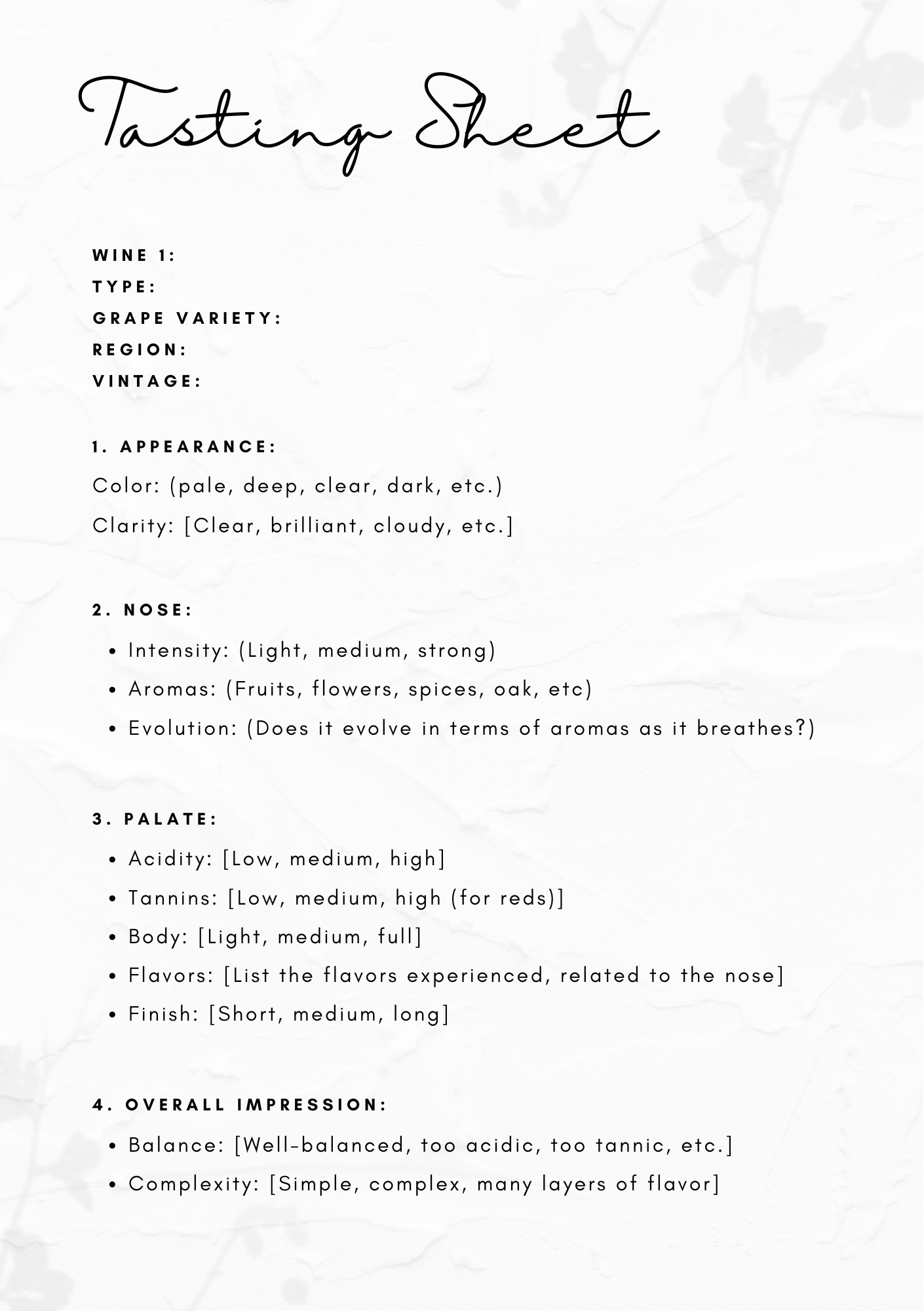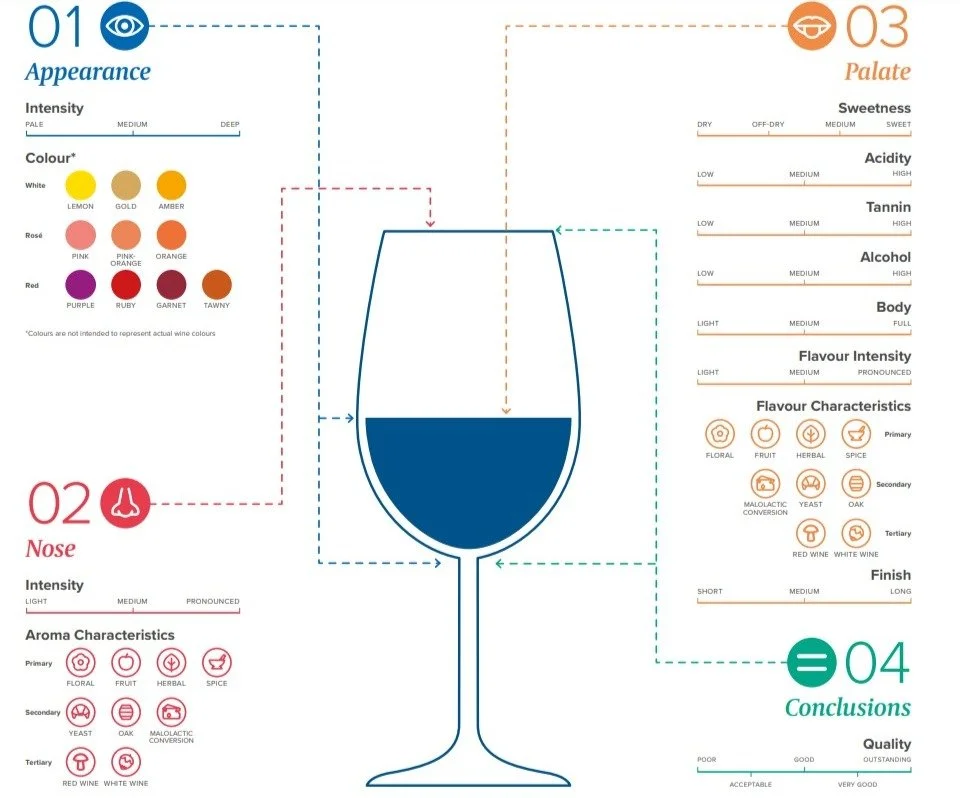Wine Tasting 101: A Beginner’s Guide to Enjoying Every Sip
Welcome to the world of wine tasting! If you’ve ever felt overwhelmed by wine jargon, you’re not alone. Wine tasting is a journey through flavors, aromas, and textures that reveals each wine’s unique story. In this guide, I’ll simplify the basics, from appearance to palate, using a tasting wheel to help you recognize different characteristics. Whether you want to enjoy wine more deeply or impress friends at dinner, this journey is about discovering what you love, one sip at a time. Grab a glass, and let’s dive in!
Step 1: Start with the Basics – Wine Types and Glassware
To get started, let's explore the different wine types and the right glasses. Wines come in various styles, each with its own flavors:
Reds are bold and full-bodied, often rich with deep flavors.
Whites are lighter, ranging from crisp and refreshing to creamy and smooth.
Rosés are light and refreshing, showcasing fruity and floral notes.
Sparkling wines are lively, offering a mix of fruity and nutty flavors.
Choosing the right glass can enhance your experience: larger, rounder glasses are ideal for reds to amplify aromas, while narrower ones work best for whites to keep them fresh. You don’t need fancy glassware; just the right choices can make a difference!
Step 2: The 4 S’s – See, Swirl, Smell, Sip
The core of wine tasting is in the 4 S’s:
See: Take a moment to observe the color and clarity. Lighter wines might indicate a fresher, younger wine, while deeper hues often signal intensity or age.
Swirl: Gently swirl the wine to release its aromas. This helps bring out the wine’s character by mixing it with air.
Smell: Take a sniff to identify notes like fruit, flowers, or spices. The aroma is a huge part of the taste experience, so don’t skip this step!
Sip: Finally, take a sip and let it linger. Notice the sweetness, acidity, tannins (for reds), and the overall body of the wine. Each component tells you something about the wine’s style.
Print a Tasting Sheet for your guests !
Writing down your impressions can help you remember what you love—and what you might want to skip next time.
Step 3: Describing Flavors and Aromas
A tasting wheel is a handy tool for describing what you’re tasting. Common notes include citrus, berry, spice, and oak, but feel free to get creative with descriptions. There’s no right or wrong way to describe your experience—just have fun exploring different flavors!
The quality of a wine is often evaluated based on the complexity of its aromas, as more varied scents create a deeper sensory experience.
Step 4: Pairing Basics for an Enhanced Experience
Wine truly shines when paired with the right food. For a quick guide, try pairing:
Sauvignon Blanc with seafood for a refreshing match
Pinot Noir with soft cheeses for a balanced bite
Rosé with light salads or appetizers
Want to dive deeper? Check out my Food & Wine Pairing article for more tips!
Step 5: Practical Tips for Hosting a Wine Tasting at Home
Hosting a tasting? Keep it relaxed and fun! Provide water and neutral snacks to cleanse the palate between 2 wines, and set a comfortable atmosphere. Consider using blind tasting bags for a fun twist—this can make guests focus more on the flavors rather than labels.
Most importantly, encourage guests to experiment and share their thoughts—wine tasting is a personal journey, and every palate is unique.
An Invitation to Explore
Wine tasting is a journey of discovery, with no wrong answers. Dive in, trust your senses, and enjoy the adventure of finding wines that speak to you. Cheers to exploring and savoring each sip!

